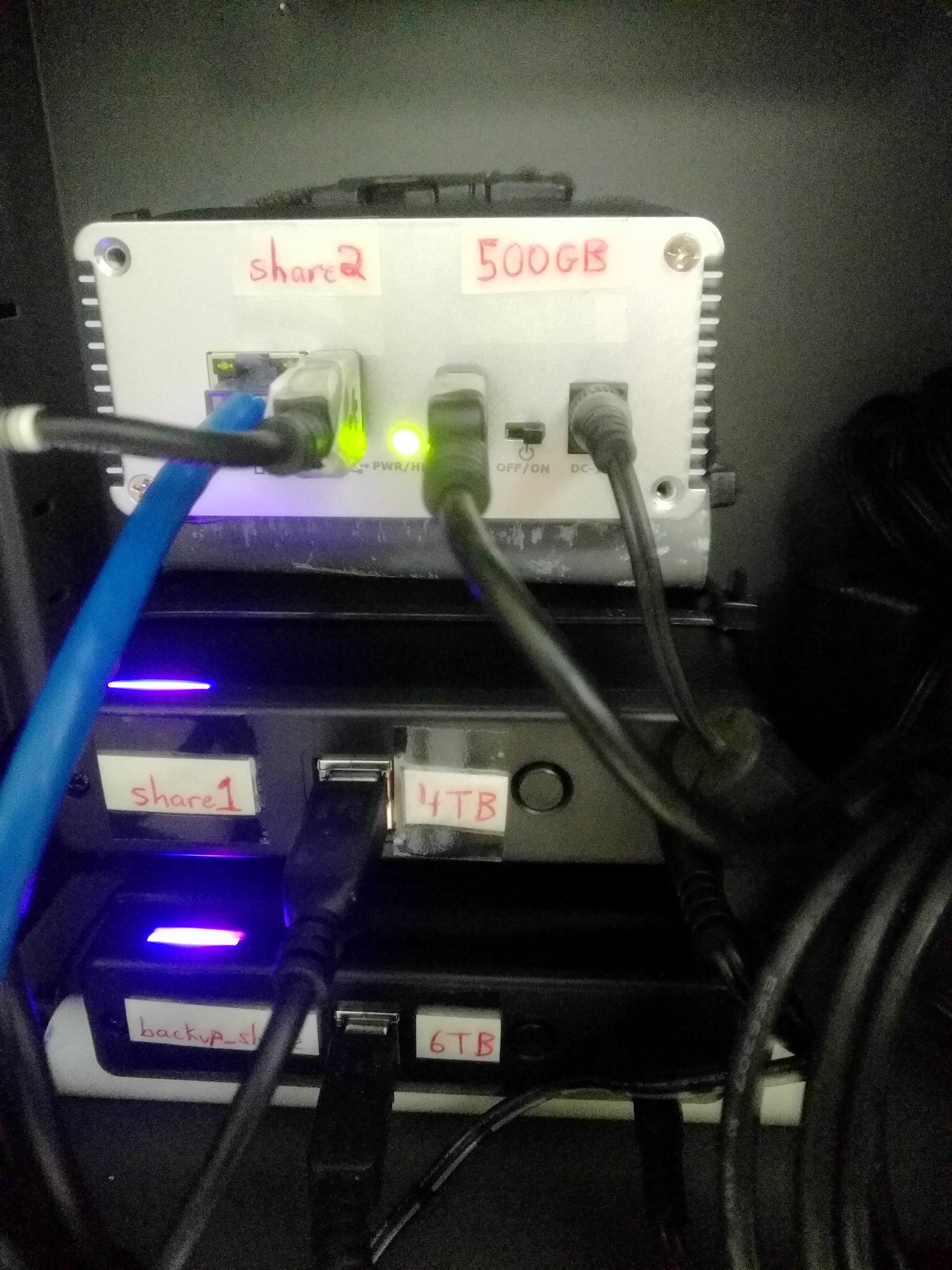NanoPi Neo 2 NAS kit (with 3 drives)
-
-
Here's another picture, this time taken with a better camera. It's about 17cm tall, 15 cm wide. Note the two clear plastic 15cm rulers. There are pieces of PVC tubing between the 3 major parts, to allow better cooling. Why is there a nylon strap around the whole rig? To prevent any vibrations from the 3.5" drives (the bottom two black things).
Full Image:
-
Whilst this is not going to win any aesthetics awards, it doing what you want it to do

-
Yes, I needed:
- small (to fit into a lockable cabinet we have, thereby decently securing it, physically)
- cheap (as in, considerably less than a comparable Qnap product, complete with a backup drive)
- decently long warranties on the drives, all 3 have >= 3 year warranties, also being of good brand names (2 x Hitachi 3.5" SATAs, plus a Samsung SSD).
- decently fast (as in, >=20MB/sec for file transfers, sustained, even uploading, and even when uploading many tiny files, and this unit indeed just barely delivers that, as long as you use FTP to do that, with a good FTP client like Filezilla, and you use GbE). SMB also serves out the same files for those who like to browse around using Windows Explorer and stream MP3's and videos straight from the SMB shares.
- a full-blown Debian-like OS, where I could "apt-get" things like "snapper", "tmux", "iotop", "htop" and "git", and use btrfs. I also wanted a web GUI, which OMV provided.
- 4TB of usable disk space (not including backup disk).
- A backup disk, again capable of writing at 20MB/sec, sustained, which this unit just barely delivers.
- Filesystem Snapshots (provided by btrfs + snapper).
Beautiful looks were not a consideration. The beauty is on the inside of this unit: Linux, btrfs, Hitachi, and Samsung.
PS: I love how I can make a backup of the MicroSD card where the OS resides using the "dd" command (on my Linux laptop). I have a second identical MicroSD card, where I burn this image made by "dd". So a backup MicroSD card is at the ready, with all the user accounts, groups, shares, cronjobs, etc. all pre-configured.
-
Jetzt mitmachen!
Sie haben noch kein Benutzerkonto auf unserer Seite? Registrieren Sie sich kostenlos und nehmen Sie an unserer Community teil!

